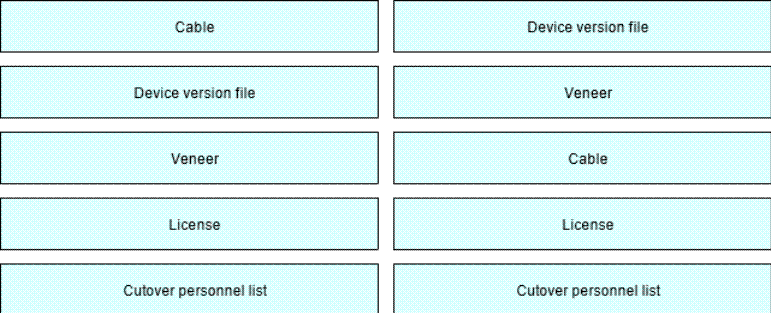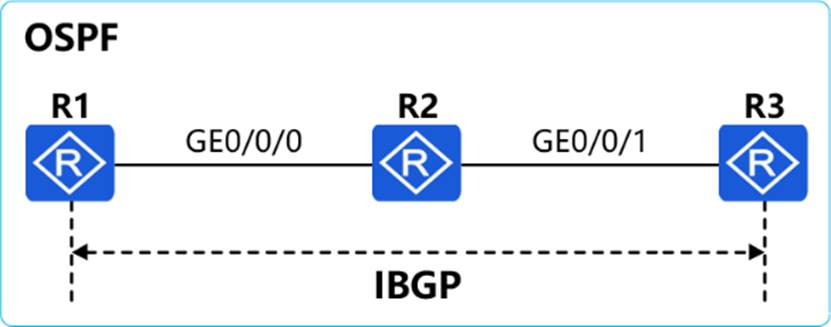Practice Free H12-831_V1.0-ENU Exam Online Questions
The path that IP packets pass through in the MPLS network is called the label switched path LSP. LSP is a bidirectional path that indicates the direction of data flow transmission.
- A . True
- B . False
BGP’s prefix-based ORF (Outbound Route Filtering) capability can send the prefix-based ingress policy configured on the local device to the BGP neighbor through the route refresh message. The BGP neighbor constructs the egress policy based on these policies and filters the routes when they are sent. Compared with configuring the routing policy on the BGP neighbor, this method not only avoids the local device from receiving a large number of useless routes, reduces the CPU usage of the local device, but also effectively reduces the configuration work of the local device.
- A . True
- B . False
During the preparation stage of the cutover project, software and hardware testing needs to be performed. Please match the operation objects and corresponding operation contents in the following preparation stage.


In CE multi-homing scenarios, if BGP AS number substitution is enabled on PEs, you can run the peer soo command on the EBGP peers of the PEs and CE to configure the Site of Origin (SoO) attribute to prevent loops.
- A . TRUE
- B . FALSE
In CE multi-homing scenarios, if BGP AS number substitution is enabled on PEs, you can run the peer soo command on the EBGP peers of the PEs and CE to configure the Site of Origin (SoO) attribute to prevent loops.
- A . TRUE
- B . FALSE
On a broadcast network, routers (including non-DIS routers) of the same level on a network segment can establish neighbor relationships. In the implementation of BFD for IS-IS, however, BFD sessions are established only between a DIS and non-DIS routers, not between non-DIS routers.
- A . TRUE
- B . FALSE
In the network shown in the figure, R1 and R2 establish an EBGP neighbor relationship through a directly connected interface, and the BFD function is enabled in the BGP process. The BFD parameters are "bfd min-tx-interva1 1000min-rx-interva1 1000 detect-multiplier6".

If the IP address of R2’s GE0/0/0 interface is deleted, and the BGP neighbor relationship is checked on R1, which of the following is the longest time for the R1 BGP neighbor relationship to change from Up to Down?
- A . 180s
- B . 6s
- C . 0s
- D . 60s
In the OSPFv3 network shown in the figure, the OSPFv3 related parameters are the default configuration. When checking the LSDB on one of the devices, some content is omitted in the LSDB. The Router IDs of R1, R3, and R4 are 10.0.1.1, 10.0.3.3, and 10.0.4.4 respectively. The Origin Router part of some LSAs is hidden. Please complete this part.



Explanation:
A-1, A-3, B-4, C-2
In the OSPFv3 network shown in the figure, the OSPFv3 related parameters are the default configuration. When checking the LSDB on one of the devices, some content is omitted in the LSDB. The Router IDs of R1, R3, and R4 are 10.0.1.1, 10.0.3.3, and 10.0.4.4 respectively. The Origin Router part of some LSAs is hidden. Please complete this part.



Explanation:
A-1, A-3, B-4, C-2
In the network shown in the figure, OSPF protocol runs between R1, R2, and R3. IBGP neighbor relationship is established between R1 and R3 using loopback interface, and BFD function is enabled in BGP process. BFD parameters are "bfd min-tx-interval 1000 min-rx-interval 1000 detect-maltiplier6".

If OSPF is disabled on GE0/0/1 interface of R2 through "undo network xxxx yyyy" command, and BGP neighbor relationship is checked on R1, by default, the longest time for R1 BGP neighbor relationship to change from up state to down state is which of the following?
- A . 180s
- B . 6s
- C . 40s
- D . 60s
